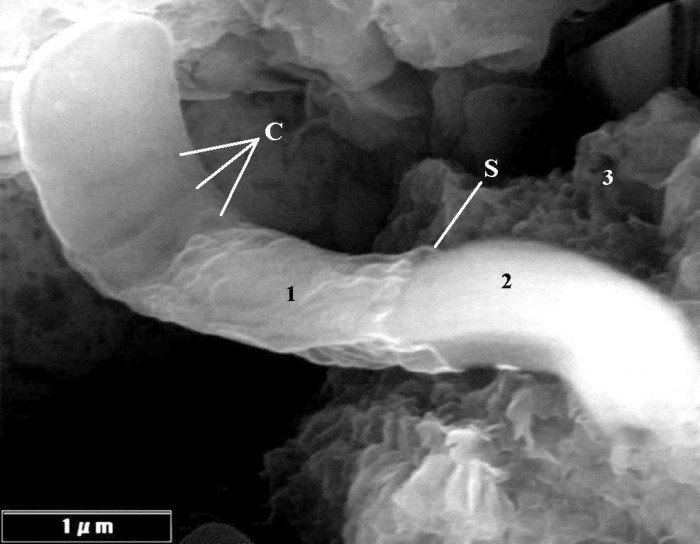Extraterrestrial Life Found in Rare Meteorite?

Dr. Richard B. Hoover, who is the astrobiology group leader at the NASA Marshall Space Flight Center, thinks he’s found evidence of life in a kind of meteorite that’s only rarely found on Earth, the CI1 carbonaceous chondrites. (We only know of the existence of nine such meteorites here on Earth.) Some of the organisms, he found, were very similar to what we know from Earth; others were unlike anything he and his colleagues had ever seen.
Dr. Hoover has discovered evidence of microfossils similar to Cyanobacteria, in freshly fractured slices of the interior surfaces of the Alais, Ivuna, and Orgueil CI1 carbonaceous meteorites. Based on Field Emission Scanning Electron Microscopy (FESEM) and other measures, Dr. Hoover has concluded they are indigenous to these meteors and are similar to trichomic cyanobacteria and other trichomic prokaryotes such as filamentous sulfur bacteria. He concludes these fossilized bacteria are not Earthly contaminants but are the fossilized remains of living organisms which lived in the parent bodies of these meteors, e.g. comets, moons, and other astral bodies. The implications are that life is everywhere, and that life on Earth may have come from other planets.
Members of the Scientific community were invited to analyze the results and to write critical commentaries or to speculate about the implications. These commentaries will be published on March 7 through March 10, 2011.
Official Statement from Dr. Rudy Schild at the Center for Astrophysics at the Harvard-Smithsonian, and Editor-in-Chief for the Journal of Cosmology:
We believe Dr. Hoover’s careful analysis provides definitive evidence of ancient microbial life on astral bodies some of which may predate the origin of Earth and this solar system.
Dr. Richard Hoover is a highly respected scientist and astrobiologist with a prestigious record of accomplishment at NASA. Given the controversial nature of his discovery, we have invited 100 experts and have issued a general invitation to over 5000 scientists from the scientific community to review the paper and to offer their critical analysis. Our intention is to publish the commentaries, both pro and con, alongside Dr. Hoover’s paper. In this way, the paper will have received a thorough vetting, and all points of view can be presented. No other paper in the history of science has undergone such a thorough analysis, and no other scientific journal in the history of science has made such a profoundly important paper available to the scientific community, for comment, before it is published. We believe the best way to advance science, is to promote debate and discussion.
Extraordinary claims require extraordinary evidence, and that’s why thousands of biologists, physicists, and other scientists have been invited to scrutinize his paper closely. How fascinating yet strangely unsurprising, though, if the claims are confirmed.
Update: Here’s the first debunking by PZ Myers.
Update 2: Second debunking by PZ Myers. NASA is now walking away from the paper:
NASA is a scientific and technical agency committed to a culture of openness with the media and public. While we value the free exchange of ideas, data, and information as part of scientific and technical inquiry, NASA cannot stand behind or support a scientific claim unless it has been peer-reviewed or thoroughly examined by other qualified experts. This paper was submitted in 2007 to the International Journal of Astrobiology. However, the peer review process was not completed for that submission. NASA also was unaware of the recent submission of the paper to the Journal of Cosmology or of the paper’s subsequent publication. Additional questions should be directed to the author of the paper.